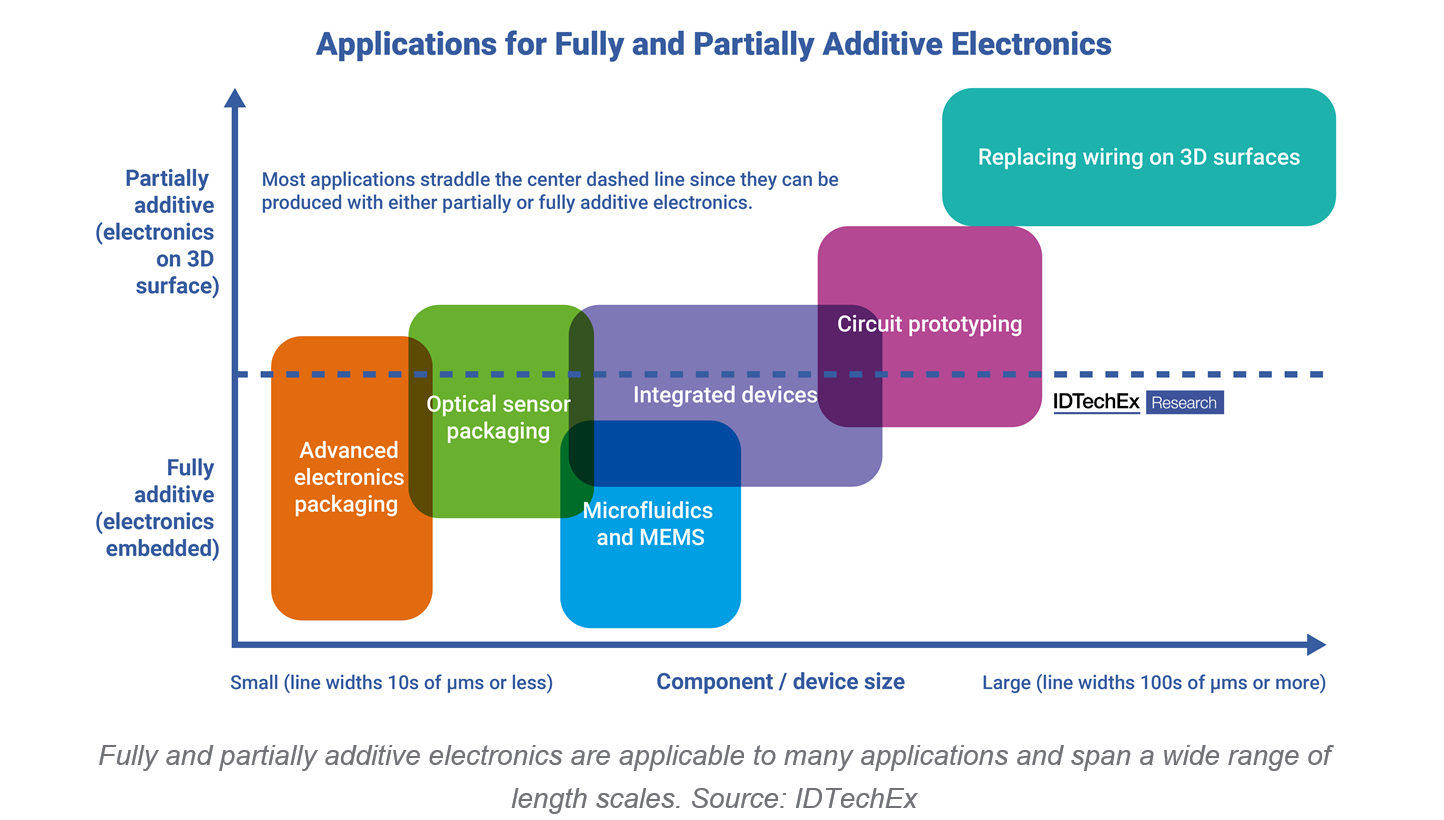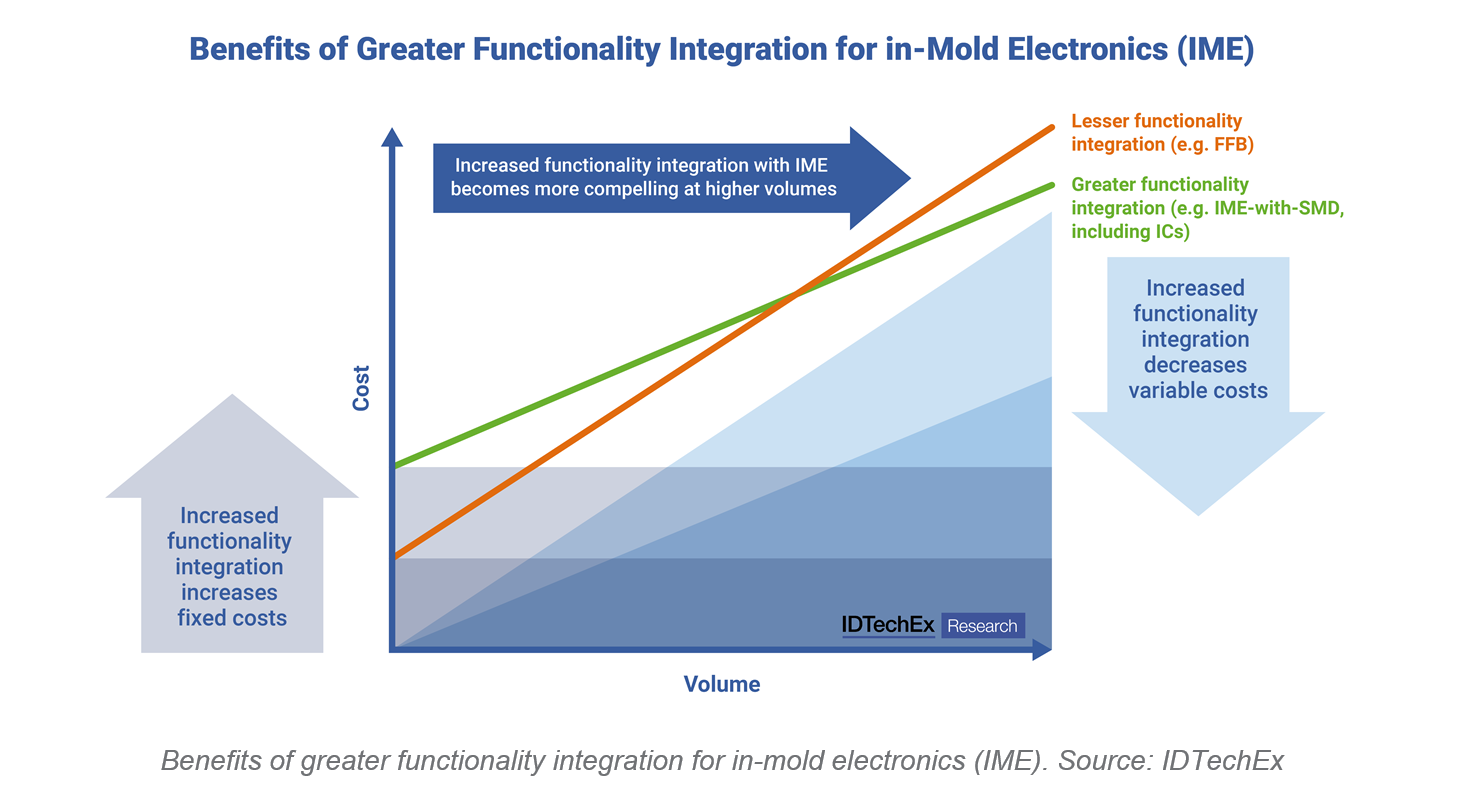Embedding electronic functionality: IDTechEx asks if it’s worthwhile
Integrating multiple functionalities within a single entity promises simpler, more efficient devices without compromising capability. Smartphones are a great example, with maps, diaries, phones, cameras, games consoles, and more integrated into a single, compact device.
However, the smartphone itself is arguably a masterpiece of packaging, containing many different components from different suppliers that are mounted onto a chassis.
What if, rather than assembling numerous subsidiary components and ensuring electrical connectivity, the functionality was integrated into the object itself? This is the promise of ‘3D electronics’, where the boundaries between mechanical and electrical design fade away and components have the electronic functionality embedded within them.
This approach can be applied to many length scales, with electronic functionality in the form of conductive inks and components are applied onto the surface of 3D objects, termed ‘partially additive’, or incorporated internally (termed ‘fully additive’, akin to 3D printing with electronics included).
In-mould electronics (IME) is a third approach to producing embedded electronics, generally in the form of smart surfaces with integrated lighting and capacitive touch sensors. With IME, conductive inks are printed, and components are optionally mounted onto a flat surface that is subsequently thermoformed and enclosed via injection moulding.
Benefits and challenges
Embedding electronic functionality within an enclosed part via fully additive electronics or IME offers a compelling value proposition: fewer parts, fewer connections, simpler supply chains, minimal assembly, lower weight, and improved sustainability.
The ability to access these benefits with established manufacturing methods such as screen printing, thermoforming and injection moulding means that IME has received extensive interest from OEMs across multiple sectors and from materials suppliers.
But is there a downside to embedding electronic functionality? After all, functional foil bonding, a competing approach to IME with less integration that also enables backlit touch-sensitive interfaces, has gained considerable commercial traction and is deployed in multiple vehicles today.
Arguably the main challenge for embedded electronics methods such as IME is that the product of individual yields determines the overall production yield. As such, the yield of each constituent process, including those that are purely decorative, must be extremely high – if there is a problem with any process step, the entire part must be discarded.
IDTechEx has been told that the biggest yield concerns for functional surfaces are associated with producing a glossy black decorative exterior rather than the electronics themselves.
The second challenge associated with integrating electronic functionality is reconfiguring supply chains. If the separate components are assembled, then each part and hence supplier can be changed independently.
In contrast, if all the components are integrated within a single part via IME or fully additive electronics, then mutual compatibility must be ensured, reducing the ease of switching suppliers and potentially increasing component prices.
When is functionality integration worthwhile?
Determining when the functionality integration offered by IME is most compelling requires consideration of two parameters: degree of integration and production volume. Achieving the requisite high yields and reconfiguring the supply chain imposes high initial costs but can reduce variable costs since less material is used and less assembly is required.
Furthermore, greater integration, such as embedding integrated circuits (ICs) within IME parts to provide processing capability, further reduces material and assembly costs.
As such, IDTechEx suggests that embedded electronics, either IME or fully additive, will have a higher value proposition as both production volume and the extent of functionality integration increase.











